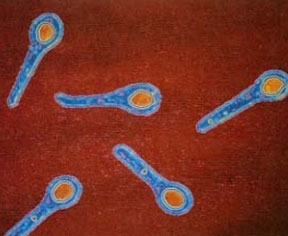
The bacteria can be found in soil, dust and manures, and often enters the body through minor puncture wounds or scratches.
With widespread immunisation this disease has become uncommon in Australia. Most at risk are older adults who have not been immunised or have not had a booster immunisation in recent years.
Prevention of this disease is primarily through immunisation. Tetanus prone wounds should be cleaned with soap and water and if not recently immunised a booster shot should be sought from your doctor. Gloves, sturdy shoes and long clothes should also be worn whilst gardening as this will lessen the chance of wounds. Lastly hands should be cleaned after gardening with soap and water.
For further information the following websites may be of use.
Disclaimer: Further advice should also be sought from your local health care professional.
The bacteria usually enter the body through cuts and sores, when in wet or muddy conditions but inhalation dust or droplets or occasionally ingestion of infected water can also lead to infection.
Symptoms of the disease are varied, but are commonly seen as headaches, fevers, coughs, breathing difficulties, pneumonia, difficulty passing urine, sores that do not heal and weight loss. There is also a high mortality rate associated with infection. Persons more at risk of the disease include those with weaker immune systems, diabetes, chronic kidney or lung disease, cancer, the elderly and those who consume hazardous amounts of alcohol.
There is no vaccine for Melioidosis at present, so gardeners should ensure that they take appropriate precautions whilst in the garden. This includes; wearing protective waterproof footwear and gloves, covering any open wounds or cuts with waterproof dressings and ensuring to shower after working in the garden.
There is also the possibility of the bacteria becoming airborne so those persons who are most at risk should avoid being outside during high wind or rain.
For further information the following websites may be of use.
Disclaimer: Further advice should also be sought from your local health care professional.
Legionella pneumophophila can be found in warm stagnant water and are sometimes found in contaminated cooling towers of large air conditioning systems.
Legionella longbeachae on the other hand is commonly found in soil and potting mixes and it is this strain of the bacteria that poses the most risk to gardeners.
The bacteria can enter the body through inhalation of contaminated water vapours or dust from sources such as potting media.
Legionnaire’s disease symptoms start with flu like indications such as fever, headache and muscle aches. These start 2-10 days after exposure and can then progress to chest pain, high fever and breathing difficulty. If left untreated the disease can lead to kidney failure and occasionally death.
Persons most at risk include the middle aged to the elderly, especially those which are heavy smokers, have chronic lung illness or those with suppressed immune systems caused by medications or illness such as AIDS, cancer, diabetes or kidney failure.
Prevention of the diseases can be achieved through reducing exposure. This can be done by;
- Wetting down potting media before use to reduce the dust
- Wearing a dust mask and gloves when handling potting mix
- Washing hands after handling soil and potting mix, and before eating, drinking or smoking.
For further information the following websites may be of use.
Disclaimer: Further advice should also be sought from your local health care professional.
